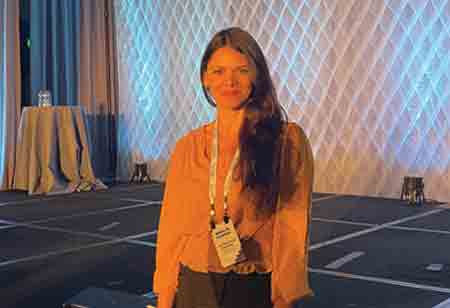

Thank you for Subscribing to Medical Care Review Weekly Brief

Ana Bentancor graduated with honors in Restorative Dentistry from the City University of New York. Upon completing her studies, she joined ClearChoice as a dental lab technician, playing a pivotal role in assisting doctors with full arch reconstruction. With more than 700 full arch conversions under her belt, she is now transitioning to a digital role as a CAD/CAM designer for the New York/New Jersey region under the leadership of Dr. Mark Andrawis.
Through this article, Bentancor highlights the significant role of dental labs in maintaining oral health and how the integration of digital technologies has revolutionized dental practices. Good oral health is undeniably important, both for functional and social reasons. Fundamentally, our teeth allow us to perform essential tasks with ease—like eating, breathing, and speaking. Beyond that, maintaining a healthy smile enhances our self-assurance, making social interactions more comfortable and embarrassment-free. Historically, the lab has played an integral role in supporting patients and doctors alike when it comes to maintaining oral health. It works closely alongside the clinic to ensure optimal treatment and care. Contrary to what many may think, dental lab technology has seen relatively few changes since its origins, specifically regarding procedures and materials. Ancient Egyptians used wax and gold to replace teeth in the same way many dental offices do today. A breakthrough came in the 1960s with the development of computer-aided design and manufacturing (CAD/CAM) for the automotive and aerospace industries. However, it wasn’t until the late 1980s that these advancements were fully adopted in dentistry. Now, the days when old-fashioned techniques and manual processes were the norm are long gone. The integration of digital technologies in dentistry is transforming every aspect of dental practice, significantly enhancing the patient experience. Being part of a company such as ClearChoice, a leader in the fixed prosthesis field, offers a tremendous advantage. In our practice, we use the ultimate trifecta of cutting-edge digital technology tools: ● Digital imaging: This is the first step in the treatment and diagnosis. It involves digital dental radiography and intraoral scanning instead of traditional impressions. ● CAD/CAM: These advancements allow prosthesis design without a stone cast. It simply requires sending digital impressions to the software. ● 3D printing: Having this technology readily available in-house offers a great advantage in terms of timing and precision. Once the doctor approves the design, it can easily be printed and delivered on the same day with high precision. Full arch conversions are an integral part of our daily operation, which involves delivering a fixed prosthesis to the patient on the very same day as the implant placement. Not long ago, this procedure was made in the lab using the articulator. Nowadays, and thanks to the incorporation of photogrammetry scanners, the level of accuracy is higher than that of traditional methods. We can gather the intraoral scan, photogrammetry implant coordinates, and a high-resolution 3D image of the patient’s face much faster than ever before.“The last decade has been a very exciting time for dentistry. It’s transitioned from a science that was heavily reliant on manual techniques to one that’s constantly evolving to create high-end restorations that can enhance the patient’s quality of life.”The last decade has been a very exciting time for dentistry. It’s transitioned from a science that was heavily reliant on manual techniques to one that’s constantly evolving to create high-end restorations that can enhance the patient’s quality of life. Digitalization has transformed how doctors diagnose and plan treatment, while dental labs have moved from hand-carved prosthetics to computer-guided surgery and CAD systems, enabling single-visit restorations from digital impressions. The benefits of digital dentistry are clear, and the future holds even greater potential.
